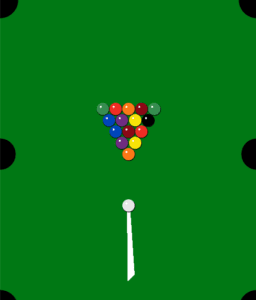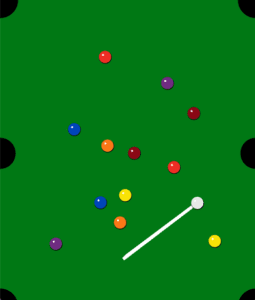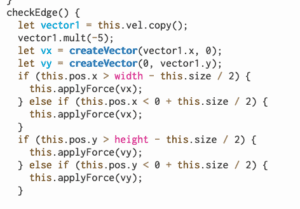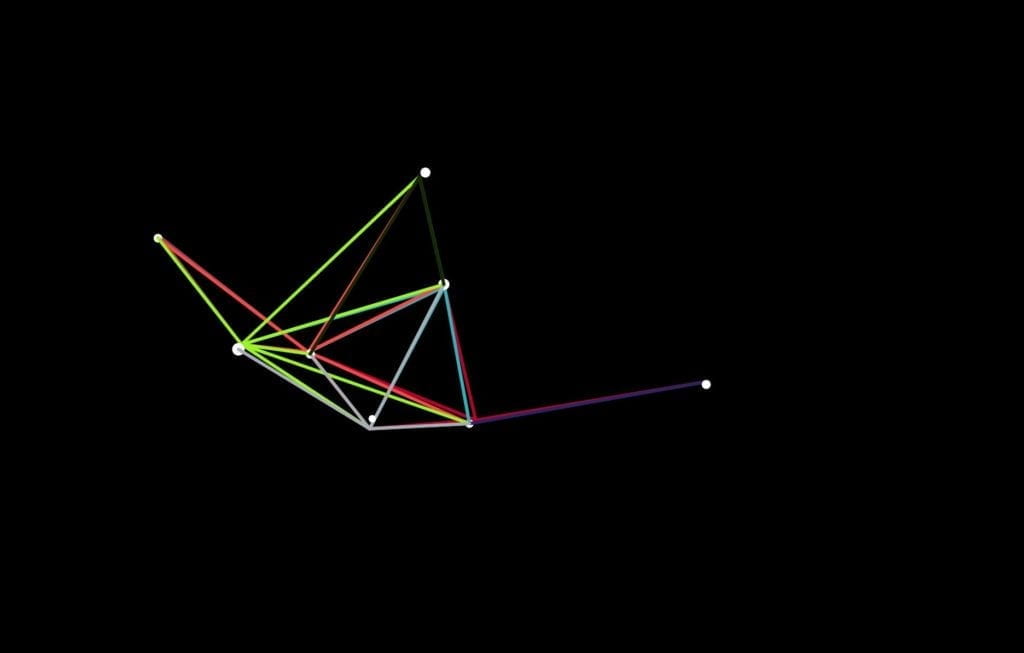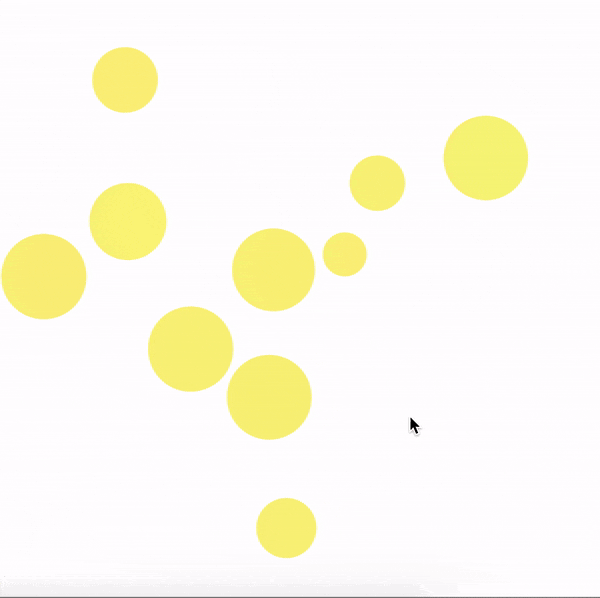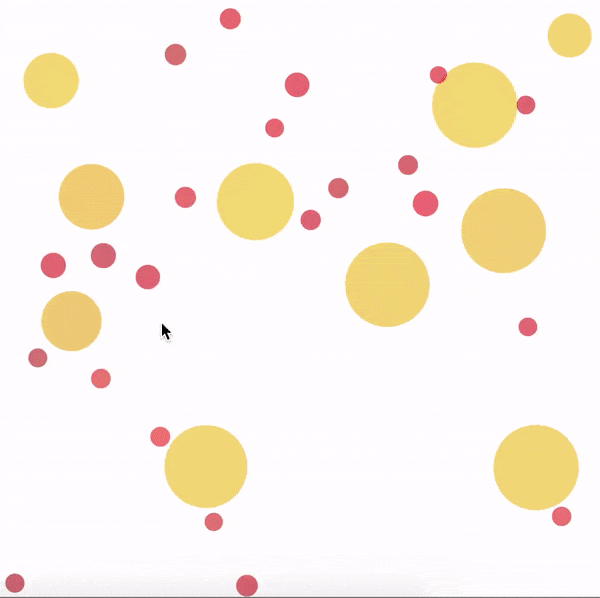Sketch: https://editor.p5js.org/adj311/sketches/kCSfl4ZjN
For this week’s sketch, I wanted to focus on figuring out collision between walls/rectangles and ball objects, since that will be a large part of my midterm project. I also wanted to toy with the idea of taking a seemingly simple game and making it complex and frustrating. So for this week’s sketch I decided to make a simple game where you have to keep a ball bouncing, but made the coefficient of restitution slightly below 0, forcing the player to move their paddle upwards in order to keep the ball in the air. I didn’t add a point or health system, but doing so would have been quite easy, something like:
function decreaseHealth() {
health -= healthDown;
if (health <= 0) { gameOver(); }
}
I think the game is pretty challenging. The more you try to push the ball up, the more it moves and snakes around your paddle. I had fun with this little game.
